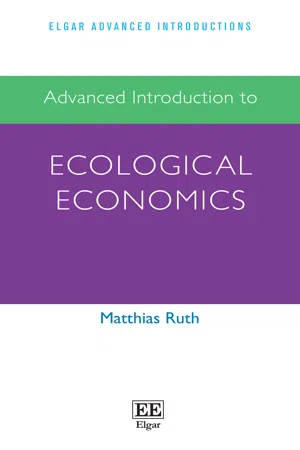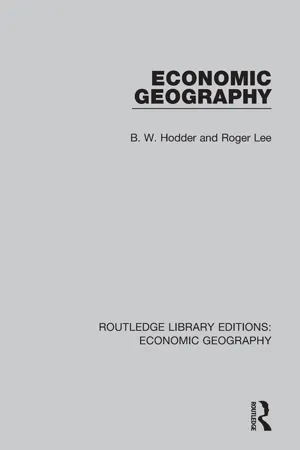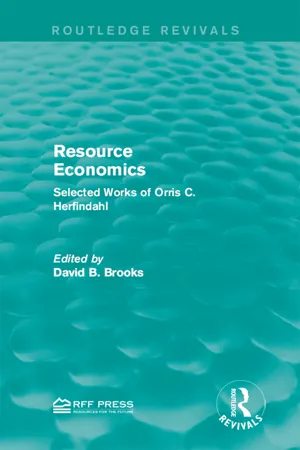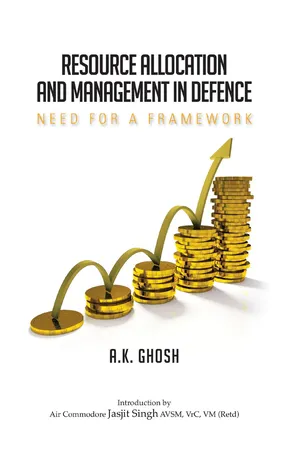Economics
Resource Allocation
Resource allocation refers to the process of distributing available resources among various uses. In economics, it involves making decisions about how to allocate limited resources to meet unlimited wants and needs. This process is crucial for optimizing efficiency and maximizing the production of goods and services within an economy.
Written by Perlego with AI-assistance
Related key terms
1 of 5
6 Key excerpts on "Resource Allocation"
- Matthias Ruth(Author)
- 2018(Publication Date)
- Edward Elgar Publishing(Publisher)
2.2 Allocating resources to meet human needs Economics is often defined as the discipline that studies how scarce resources could optimally be allocated to meet the needs of humans. A brief reflection on this definition reveals a few basic insights of rel- evance for our subsequent discussion. 14 ADVANCED INTRODUCTION TO ECOLOGICAL ECONOMICS First, note that this definition implicitly assumes that the needs of humans are given, and humans, with their needs, have some control over the natural environment from which the resources are extracted and into which wastes are released. But the term “resources” in this definition is broader than just natural resources. It includes also, for example, human resources, capital goods and intellectual property. These, too, are subservient to the goal of optimal allocation. Labor with different levels of qualifications, tools and machines, and copyrights, for example, are bought and sold on markets in efforts to help better meet the needs of those who offer them and those who acquire them. An economics that instead started with the resources as given and that presumed that the needs are the object of adjustment, would be a rather different kind of economics than the one implied by the defini- tion above. Such an economics would ask: For a given endowment of resources, what adjustments to the needs of humans must be made and how, to assure that transactions do not violate long-term con- straints on their sustainable use? What uses of natural resources keep extraction and waste generation within biophysical boundaries? What exchanges of labor and investments in capital are socially acceptable? What kinds of rights on intellectual property need to be established and protected to incentivize the generation of new knowledge and how much of that knowledge should be in the public domain? Ecological economics straddles these two different perspectives on the role of needs in allocating resources.- eBook - PDF
Resource Allocation and Productivity in Education
Theory and Practice
- William L. Boyd, William T. Hartman(Authors)
- 1998(Publication Date)
- Praeger(Publisher)
The Resource Allocation process offers a largely unused window from which to observe and analyze important building-level educational choices. Through the distribution of resources among the various in- structional, support, and administrative units in high schools, admin- istrators and faculty have an opportunity to influence student outcomes, as well as their own working conditions and relationships. Drawing on an earlier report describing the Resource Allocation process in high schools (Hartman, 1985), this study analyzes the behaviors and decisions of the major participants in the Resource Allocation process, the manner in which the schools actually operated, and the underlying motivations of school personnel. Particular attention is paid to the objectives pursued through the distribution of resources in the schools and the results that the decision makers expected to achieve. EXPLAINING Resource Allocation BEHAVIORS Three contrasting perspectives are examined to help understand and explain the behaviors of those responsible for allocating resources within high schools. The first is a rational model approach, which assumes that administrators and others involved in the process act in a logical fashion to improve student outcomes. The second approach is a bureaucratic organization model, which assumes that resource alloca- tion decisions are based on existing standard operating procedures and reflect the organization's primary concern with limiting and controlling changes to the present operation. The third approach is a political economy model, which assumes that persons involved in the Resource Allocation process operate in a bureaucracy in which "individuals try to maximize their own welfare (or benefits) within the context of the institutional or organizational reward structure they face" (Boyd, 1982, p. 113). These three approaches offer very different explanations of the objectives and motivations of school officials. - eBook - ePub
- B. W. Hodder, Roger Lee(Authors)
- 2015(Publication Date)
- Routledge(Publisher)
Economic activity consists of several closely related stages: the generation of wants and needs known collectively as demand; the transmission of information about the nature of demand to firms; the transfer of information from firms to resource owners about the demand for resources; the response of resource owners by mobilizing their resources; the movement of resources to firms in return for income; the manufacture of goods; the transmission of information from firms to consumers about the availability of goods; the movement of goods to consumers in exchange for payment; the consumption of goods by final consumers. All these aspects of economic activity refer to those tangible, often visible, processes which are apparent in everyday life and whose energy creates the economic landscape. But it will already be clear that there is another and perhaps more fundamental aspect of economic activity – decision making – which provides the impetus and direction for these processes.Three sets of decisions
All economies have somehow to make at least three fundamental and interdependent sets of economic decisions. These are allocation decisions – what commodities shall be produced and in what quantities; production decisions – how and where these goods shall be produced; and distribution decisions – for whom they shall be produced.ALLOCATION DECISIONS
In a society where economic activity consists of the concerted action of large numbers of individuals, decisions about which goods and services and in what quantities these goods and services are to be produced are exceedingly complex. Individual views on the most effective use of scarce productive resources will vary widely, so that the economy must make value judgments about the kinds of goods to be produced and quantity judgments about how much of each good should be produced. In all economies the criteria of efficiency and utility should govern the decisions because allocative efficiency is measured by the ratio between useful output and total input. The effect of such decisions is to allocate resources to those productive agencies capable of producing the chosen goods.PRODUCTION DECISIONS
Having decided on the type and amount of goods to be produced, the next set of decisions involves the organization of production. Production is a process involving firms in the acquisition of premises at a suitable location in order to combine resources in an efficient productive ratio and to set in motion the distribution of the finished products. Again, the role of utility modifies any purely physical interpretation of efficiency. It is often not possible to use resources in the occupations, locations and ratios in which they have the highest level of productivity (that is, the highest output-input ratio), because the constraints of the utility priorities of society may well modify this simple relationship. Both resources and demands are distributed unevenly over the surface of the earth. Some communities, therefore, must attempt to compensate for their lack or relative scarcity of certain resources by utilizing their limited resource endowment in ratios which make extensive use of plentiful resources and intensive use of scarce resources. Alternatively they may, by military or economic conquest, extend their access to a wider range of resources or, by developing trading connections, import those goods which are demanded by their consumers but which are difficult, if not impossible, to produce with their own resource endowment. As a result of these considerations, decisions about methods of production need to be made at the same time as decisions about which goods and services are to be produced, because the output of goods depends not only upon utility priorities and resource endowment, but also upon the ways (production techniques) in which the resources can be combined in productive service. - eBook - ePub
Resource Economics
Selected Works of Orris C. Herfindahl
- David B. Brooks(Author)
- 2015(Publication Date)
- Routledge(Publisher)
with ALLEN V. KNEESE)THE ROAD WE HAVE TRAVELLEDIn this last chapter we look back over the material we have covered in the context of a number of important general questions. What have we learned about economic theory that helps analyze problems in the management of natural resources? Where are the difficulties? Is economic theory of help in predicting what the future has in store for society? Can it help us to make decisions that will presumably affect future events or will we be swept along willy-nilly to unknown and perhaps terrible future states?Our objective has been to provide an account of those parts of allocation theory that seem to be especially useful in the analysis of problems in the management of natural resources and which do not receive much attention in the usual courses in economic theory. The first step was a rapid review of the basic ideas of allocation theory, including the sources of market failure, this being central to the later concern with resource problems that are not wholly encompassed within private economic entities.Substantial attention was given to the idea, and some of the basic techniques, of maximization subject to side conditions or restrictions. One of these techniques, linear programming, was given considerable attention along with the closely related tool of input-output analysis, since these tools have and will play an important role in the empirical analysis of resource management systems. Although basic ideas are important, the reader will want to consult specialized sources to develop a certain amount of technical expertise in manipulating these tools.Since some important natural resource problems are part of the more general problem of capital accumulation, far more space has been devoted to capital theory and related matters than in a conventional text. A simple model of capital accumulation was presented. Some of the implications of steady growth of various types were brought out. We have taken the liberty of giving considerable emphasis to our own comments on the problem of how rapidly capital should be accumulated and of how natural resources might be introduced into the problem. Two types of more specific problems involving management over time were discussed, each of them involving the economic system in interaction with a natural system. The first of these natural systems was the comparatively simple one of mineral depletion, the second was a simple example, cast in terms of a fishery, of the immensely more complicated problem of managing economic-biological systems. - eBook - ePub
Resource Allocation and Management in Defence: Need for a Framework
Need for a Framework
- (Author)
- 2013(Publication Date)
- KW Publishers(Publisher)
1Thus, economics is basically concerned with allocation of resources among competing ends to maximise attainment of the ends and since the means are limited, it emphasises the necessity for exercising choice in the achievement of goals.Many of the military problems can be analysed in this conceptual framework. Limited resources mean limited output. Attention gets focussed on ‘outputs’. After conceptual clarity about these ‘outputs’ is achieved, the next point that comes up is that, owing to the limitation of resources, a choice must be made as to what quantities of each ‘output’ need to be produced to get the ‘best value for money’. Therefore, an important field of enquiry is how these choices are being made and on what basis.An economist naturally analyses military problems in terms of his accustomed framework, using logic of choice. “Military problems can be formulated as economic problems of maximisation, subject to constraints.”2 Constraints, of course, are of resources. We are not talking only of budgetary resources. The nation turns over to the military Services certain resources, some of which are specialised ones—bases, military capital equipment and trained manpower inherited from past periods. Others are general resources like the budget, which, with certain limitations, can be spent on anythingThe task of the Services and of the Ministry of Defence (MoD) is to use these resources in such a way that our military power or ‘military worth’ is maximised. So, when we approach the question of optimum utilisation of resources for maximisation of the military worth, a total look is required at both the ‘inherited resources’, which are specialised, as also the general resources like the defence budget. “Of course, there is no way of measuring military power or military worth—in the general case—any more than there is a way of measuring an individual’s, a family’s, or a firm’s utility or preference function.” But, as Hitch goes on to add, “The conceptual framework helps greatly even if we can’t fill all the empty boxes. It tells us how to seek solutions.”3 - eBook - ePub
Game Theory
A Modeling Approach
- Richard Alan Gillman, David Housman(Authors)
- 2019(Publication Date)
- Chapman and Hall/CRC(Publisher)
Chapter 9Resource AllocationThe central mathematical problem in this chapter is that of dividing assets fairly among a group of agents. We suggest several reasonable allocation methods, describe fairness properties in order to characterize some of the allocation methods, and build bargaining, coalition, strategic, and incomplete information game models. We finish with a comparison of the multiple approaches.In previous chapters we began by defining a game which served as a model for a variety of scenarios. Now that we have the modeling tools associated with a variety of games, we begin with a scenario and investigate how different games can serve as models.Inheritance. Bob, Carol, and Doug have inherited equal shares in their mother’s estate, which consists of a cabin, a car, silverware, and $6,000 in cash. The three siblings are friendly with each other, but it is important that they each believe that the division of property is fair. They have differing views about the worth of each item; however, each thinks that the cabin makes up a majority of the estate’s value, and so the person receiving the cabin will need to give money to the other two siblings to even up the final distribution. The siblings must decide how to divide up the estate [41 ].Since the siblings are willing to exchange money to help ensure each receives an equal share of their mother’s estate, we will assume that each can ascribe a monetary value to each item as shown in Table 9.1 .Table 9.1 Inheritance Monetary ValuationsItem/Sibling Bob Carol Doug Cabin $66,000 $60,000 $42,000 Car $10,000 $12,000 $7,000 Silverware $17,000 $27,000 $11,000 Cash $6,000 $6,000 $6,000 Estate (sum) $99,000 $105,000 $66,000 9.1Resource Allocation Problem To begin modeling this scenario, we first recognize it as a Resource Allocation problem.Definition 9.1.1. A Resource Allocation problem consists of the following:1.A finite (possibly empty) set L of items.2.A fixed amount M of money.3.A finite set N ofn ≥ 2
Index pages curate the most relevant extracts from our library of academic textbooks. They’ve been created using an in-house natural language model (NLM), each adding context and meaning to key research topics.





